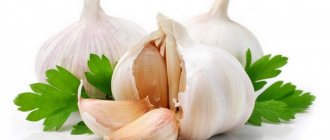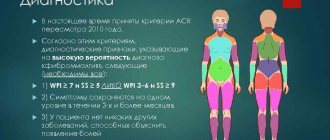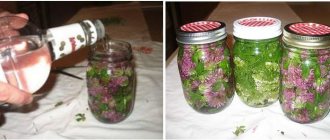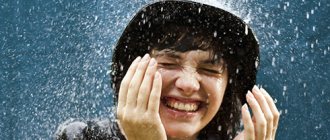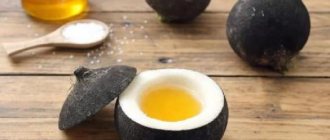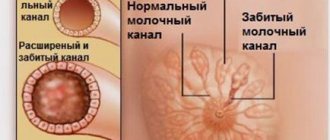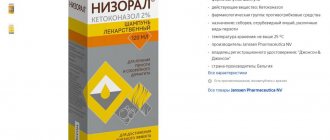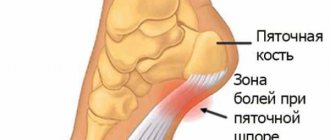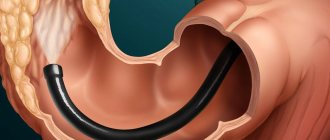In the 20s of the last century, the Dresden pathologist K. Schmorl revealed that the spine is formed by the age of 20 - 22 and soon enters the stage of early aging and wear. In the intervertebral discs, under the influence of loads, starting from the third decade, degeneration processes begin.
Osteochondrosis (osteochondrosis: in Greek osteon - bone + chondros - cartilage) is a degenerative process of articular cartilage and underlying bone tissue. This disease is based on progressive deformation (change in shape and premature wear) of the intervertebral cartilaginous disc with subsequent damage to the vertebrae, intervertebral joints and ligaments. Currently, abroad and in our country, the term “dorsopathy” is more commonly accepted for the diagnosis of complex degenerative changes in the spine.
What is dorsopathy?
Dorsopathy (from the Latin dorsum - back) is a generalized name for various pathologies of the spine, soft tissues of the back (paravertebral muscles, ligaments, etc.).
A general symptom of various types of dorsopathy is pain syndromes in the body area (cervical spine, back, lower back), not associated with diseases of the internal organs. The cause of pain in dorsopathy is degenerative-dystrophic diseases of the spine, as well as damage to the soft tissues of the back (paravertebral muscles, ligaments, etc.). The main manifestations are back pain and limited mobility of the spine.
Dorsopathies are characterized by a chronic course with exacerbation of pain.
Why does my back hurt?
As soon as the first man got up from all fours and raised his head proudly, he doomed all his descendants to suffering associated with the spine. The spine in four-legged animals is located horizontally and serves to balance all parts of the body. Such a spine remains in ideal condition for a long time and can withstand any stress, tension and exposure to adverse factors. In humans, the spine began to play the role of a rod, or column, and turned into that part of the body that is very easy to disable. Numerous modern studies have shown that pathological changes in the spine are not inherent to individual people or groups of people, but to all of humanity as a biological species. These changes lead to the fact that by the age of fifty, approximately 80% of men and 60% of women suffer from spinal diseases, and the onset of clinical manifestations of the disease falls on the most working period of life, on average 35 years. The most common cause of back pain is dorsopathies.
Classification of dorsopathies
Dorsopathy can be caused by degenerative and inflammatory processes of various structures of the spine: intervertebral disc, intervertebral joints, spinal ligaments, paravertebral muscles. Involvement of the spinal roots or spinal cord in the process produces focal neurological symptoms.
According to international standards, all types of dorsopathy can be divided into three large groups:
- deforming dorsopathies - pathological deformations of the spinal column caused by dystrophic changes in the intervertebral discs (without violating the integrity of the fibrous ring, without protrusions and hernias of the nucleus pulposus). This group includes lordosis, kyphosis, scoliosis, spondylolisthesis (displacement of one of the vertebrae relative to another), osteochondrosis and subluxations;
- spondylopathies - include all types of inflammatory, degenerative and traumatic spondylopathies;
- other dorsopathies are discogenic dorsopathies with progressive degenerative-dystrophic changes in the intervertebral discs (fibrous ring and nucleus pulposus) with protrusion, intervertebral hernias, as well as various types of dorsalgia, i.e. pain syndromes in the neck, trunk and limbs without displacement of the intervertebral discs, without dysfunction of the spinal roots or spinal cord.
Spinal traction
Clinical studies have shown the high effectiveness of spinal traction treatment. During the procedure, the height of the intervertebral discs increases. Negative pressure is created in the intervertebral space, retracting the protruding part of the disc. The pressure on the nerve roots decreases or disappears completely.
During traction, conditions are created that are favorable for the regeneration of the torn area of the annulus fibrosus, and blood flow improves. The shock-absorbing properties of the vertebrae are restored, the load is removed from the muscles and spine.
Traction is carried out after examining the patient on MRI or CT on a multifunctional traction-massage, inversion tables and Professor Velikanov’s device. The patient is placed on the simulator, the limbs are secured with belts, and the spine is stretched using a sliding table or belt traction. All parameters of the procedure are determined by the doctor, taking into account the characteristics of the patient’s body.
You can stretch the spine yourself - using a horizontal bar. The exercise is useful, but it practically does not affect the cervical and first thoracic vertebrae.
Symptoms of dorsopathy
The main symptoms of dorsopathy are:
- constant aching back pain, tension and soreness on the affected side in the muscles of the neck, shoulder girdle, back and limbs;
- increased pain with sudden movements, physical activity, heavy lifting, coughing and sneezing;
- a feeling of numbness and aches in the limbs, paresis (impaired sensitivity), muscle weakness (up to paralysis), with decreased reflexes and wasting of the muscles of the arms and/or legs;
- muscle spasms, limited mobility, decreased range of motion;
- local changes in soft tissues: vascular, dystrophic changes, neuromyo- and neuroosteofibrosis.
Depending on the location of dorsopathy, the following symptoms are possible:
- with dorsopathy of the cervical spine: pain in the arms, shoulders, headaches. Complaints of noise in the head, dizziness, flashing “spots” and colored spots before the eyes are also possible. In combination with a throbbing headache, this gives reason to assume the so-called “vertebral artery syndrome” (one of the complications of cervical dorsopathy).
- with dorsopathy of the thoracic spine: pain in the chest, in the area of the heart and other internal organs;
- with dorsopathy of the lumbosacral spine: pain in the lower back, radiating to the sacrum, lower extremities, and sometimes to the pelvic organs;
- with damage to the nerve roots (herniated intervertebral discs, osteochondrosis, spondylolisthesis, spondyloarthrosis): shooting pain and sensory disturbances, malnutrition, hypotension, weakness in the innervated muscles, decreased reflexes.
According to the mechanism of pain in dorsopathy, the following types of pain can be distinguished:
- local pain - usually constant, localized in the area of damage to the spine, varies depending on the position of the body;
- referred (projection) pain - similar in nature to local pain, but spreads along the affected nerve;
- neuropathic (radicular) pain - “shooting pain”, can be dull, aching, but with movement, as well as coughing and sneezing, it intensifies significantly and becomes acute (“lumbago”). Sensory disturbances, malnutrition, hypotension, weakness in the innervated muscles, and decreased reflexes are possible.
- non-radicular pain - pain due to muscle spasm, muscle hypertonicity (psychogenic pain).
Prevention
To prevent the development of pathology in the spine and back, it is necessary to lead a correct lifestyle, eliminate sudden loads, and keep the muscles of the torso and back in good shape. Regular sports, gymnastics, and walks help with this. If you sit for a long time, you need to get up periodically to stretch your spine. Make time for active recreation: swimming, exercising on the horizontal bar to unload the spine (a simple hang is enough). A good prevention is morning exercises. It is recommended to perform simple exercises daily: slight bends and turns of the torso. Try to include more dairy products in your diet, which contain calcium, which strengthens bones and joints. If you experience regular pain in the neck, back, or tailbone area, you should consult a doctor. Disease prevention can be divided into primary and secondary. The primary measures include the following:
- playing sports on a regular basis;
- visiting a massage parlour;
- exercise therapy classes with a qualified trainer;
- eliminating factors leading to obesity;
- generally healthy lifestyle;
- elimination of existing pathologies correctly and in a timely manner.
Secondary prevention includes measures to prevent recurrence of the disease:
- exercise therapy classes with a trainer on a regular basis, in a group or individually;
- visiting the pool and massage sessions;
- regular visits to the doctor and careful adherence to all his instructions and recommendations;
- creating the right diet;
- exclusion of strength sports and, in general, limitation of significant physical activity;
- course intake of vitamins on the recommendation of a doctor.
Clinical manifestations of dorsopathy
Clinically, dorsopathy manifests itself as:
- reflex syndrome (90% of cases)
- compression syndrome (5-10% of cases).
Reflex syndromes in dorsopathy (muscular-tonic, neurovascular and neurodystrophic) arise due to irritation of pain receptors in the back muscles as a result of the action of any pathological factors (pinching, inflammation or irritation) and are accompanied by a reflex muscle spasm. However, muscle spasm itself causes an additional pain impulse, resulting in a vicious circle of “pain - muscle spasm - pain”.
Compression syndromes in dorsopathy are caused by the mechanical effect of a hernial protrusion, bone growths or other pathological structure on the roots, spinal cord or blood vessels. Accordingly, compression syndromes are divided into radicular (radiculopathy - pinching of the spinal nerve root), spinal (myelopathy - compression of the spinal cord) and neurovascular (compression of the vertebral artery).
As for myelopathy, it is more often observed in the cervical, less often in the lumbosacral spine.
Myofascial pain in dorsopathy
In the diagnosis of dorsopathy, the role of myofascial pain syndromes (myositis or myalgia, affecting 35 to 85% of the population) is often underestimated. The essence of myofascial pain syndrome is that the muscle suffers primarily, and not after morphological or functional disorders in the spine. Any muscle or muscle groups can be involved in the pathological process.
One of the most common causes of myofascial pain is acute muscle overstretching. Usually the patient remembers exactly what movement or action caused the pain. Myositis can also develop against the background of constant overstrain of a muscle group, or hypothermia.
To make a diagnosis of myofascial pain syndrome, it is necessary to identify the following clinical signs:
- on palpation the muscle is spasmodic;
- within the spasmed muscle, zones of even greater muscle compaction are clearly defined - trigger points that are particularly painful.
Causes of dorsopathy
The most common causes of dorsopathies are:
- osteochondrosis of the spine - degenerative changes in the intervertebral discs with subsequent deformations of the bodies of adjacent vertebrae (spondylosis), intervertebral joints (spondyloarthrosis) and the ligamentous apparatus of the spine;
- myofascial syndromes
The emergence and development of dorsopathy is promoted by:
- physical inactivity (low physical activity);
- degenerative-dystrophic processes in the spine and adjacent tissues caused by external factors and age-related changes (osteochondrosis);
- poor posture (scoliosis, kyphoscoliosis, stoop);
- frequent colds, obesity, gastrointestinal diseases, monotonous or poor diet;
- alcohol abuse, smoking, as well as addiction to fried, smoked foods, pickles, spices and foods rich in purine bases
- constant work in unfavorable weather conditions, when low temperatures are combined with high air humidity;
- vibration;
- unnoticeable uneven load on the spinal column due to a variety of factors (for example, incorrect position of the spine during work and other daily activities);
- prolonged stay of the body in physiologically uncomfortable positions: sitting for many hours bent over a desk at school, college, at home, at work - in a car, at a computer, at a drawing board, standing at a machine, at a counter, etc.
- heredity (hereditary predisposition is realized through the characteristics of the somatogenic, psychogenic, hormonal, immunological, biochemical constitution, including connective (cartilaginous) tissue).
In first place in terms of frequency of occurrence are lesions of the lumbosacral spine (60-80%), and in second place are the cervical spine (about 10%).
Diagnostic features
The doctor carries out a set of measures to determine the causes of the disease and make a diagnosis. The specialist clarifies with the patient at what time the pain sensations appear, what their nature is, and their intensity. The doctor prescribes a number of tests, including:
- Computed tomography
is a high-precision method that allows you to examine tissue in several planes. The equipment creates a three-dimensional image of the inspected area. - MRI
is used to diagnose deformation changes in the cartilage of intervertebral discs. With its help, blood vessels, nerve endings and ligaments are visualized. - X-ray of the spine
in different projections - performed to confirm or exclude spondylopathy, provides good visualization of hard bone tissue.
Treatment of dorsopathy
Surgical treatment of dorsopathy is rarely required. Treatment of dorsopathy and its complications is usually carried out using conservative methods aimed at eliminating pain, dysfunction of the spinal roots and preventing the progression of dystrophic changes in the structures of the spine.
The treatment method for dorsopathy in each specific case depends on the cause and severity of pain syndromes. The optimal approach is an integrated approach based on a combination of various treatment methods. The correct choice of techniques allows you to achieve the most lasting results.
The following medications and treatment methods are used in the treatment of dorsopathy
- non-steroidal anti-inflammatory drugs (NSAIDs) - used in the acute stage to reduce pain and suppress inflammatory processes in the area of the affected vertebrae;
- muscle relaxants - used for severe muscle spasms, relaxing tense back muscles, significantly reducing pain;
- traction treatment of dorsopathy (traction treatment). When using this method of treating dorsopathy, the paravertebral tissues, ligaments, and muscles are stretched, as a result of which the distance between individual vertebrae increases by 1-4 mm (on average by 1.5 mm). In the case of compression of the nerve root or blood vessels in the spinal canal by a disc herniation or osteophyte, traction helps to reduce the compression or completely eliminate it;
- sedatives are also recommended in the treatment of dorsopathy, because Constant pain leads to tension and fatigue of the nervous system. In addition, sedatives can reduce psychogenic muscle spasms;
- for the treatment of dorsopathy, various types of physiotherapeutic procedures are prescribed (ultraviolet irradiation, darsonvalization, electrophoresis, phonophoresis, exposure to a magnetic field, ultrasound, diadynamic currents, underwater shower, massage, mud applications, etc.);
- Manual therapy and acupuncture are used in the treatment of dorsopathy;
- After relieving pain in the treatment of dorsopathy, drugs are recommended to accelerate recovery processes - biogenic stimulants, B vitamins, anabolic drugs, vascular drugs (improves nutrition of the nerve roots and blood supply to the spine). At this stage, physical therapy is also very useful.
It is important to remember that NSAIDs, analgesics, and antispasmodics used in the therapeutic treatment of dorsopathy are effective, but with prolonged use they can cause harm to the body. And for some gastrointestinal diseases, many of these drugs are generally contraindicated.
Therefore, a very important task is to minimize side effects, and, consequently, harm caused to the body, without reducing the effectiveness of treatment. A new generation drug can help with this - the pain-relieving anti-inflammatory therapeutic patch DORSAPLAST.
Pathology therapy
The main goal of treatment is to relieve the patient of pain and discomfort.
Drug therapy
For negative symptoms, the following types of medications are prescribed::
- Anti-inflammatory non-steroidal compounds.
- Ointments and gels for local blockade.
- Muscle relaxants.
- Painkillers.
- Chondroprotectors.
The first 3 days require bed rest . Pain syndrome is relieved by injections of muscle relaxants and blockades. Anti-inflammatory drugs are also effective.
After a week, the patient begins taking muscle relaxants in tablet form . If sometimes severe pain occurs, a blockade is performed using local anesthetics. The patient is now allowed to get up and do light exercise.
Approximately from the 12th day after the start of treatment, physical activity and exercise therapy are allowed. The use of analgesics continues.
In the third week of treatment, physiotherapy and massage are added. Painkillers are used as a last resort.
Video: “Blocking pain in the lumbar region”
Please pay attention to the following articles:
- What is cervicalgia and how is it treated?
- You can learn about the causes of dorsopathy in the cervical spine by following this link
- You can read more about dorsopathy of the thoracic spine here
Physiotherapy
Did you know that...
Next fact
Physiotherapy is used after eliminating acute pain. After eliminating acute pain, physiotherapeutic procedures are always prescribed.
The following methods are used:
- Electrophoresis.
- Magnetotherapy.
- Mud therapy.
- Laser therapy.
- Ultrasound therapy.
All procedures are popular because they are quite effective and without adverse reactions.
Gymnastics
Physical exercises must be included in the treatment of dorsopathy . This is a complex of therapeutic exercises, water aerobics, classes on special simulators, and swimming.
With the help of exercise therapy, compression of the nerve endings of the spine is eliminated, the spinal muscles are strengthened, flexibility is increased and relapses are prevented. Specialists select the necessary exercises, taking into account the stage of the disease and the characteristics of the patient.
Gymnastic complexes are designed in such a way that they always contain exercises that contract the deep spinal muscles , as well as the abdominal muscles. Naturally, the complex includes stretching and, at the end, relaxation exercises. Workouts start at 10 minutes and progress to 30 minutes.
Massage
Massage is always actively used in the treatment of spinal diseases . With dorsopathy, massage is also important. Sessions are conducted taking into account the stage of the disease (acute or latent).
In the first stage (acute), patients most often turn to specialists. Acute pain and limited movement caused by pinched nerve roots require a gentle and gentle approach. During the acute period, long sessions of relaxing manipulations are used. Each one usually lasts about an hour. To alleviate the condition, segmental techniques and acupressure are also used.
The latent period is the best time for manual therapy and therapeutic massage. Disc pathologies that are dystrophic in nature require long-term treatment. It is necessary to restore blood circulation in the affected area. A massage is used to increase muscle tone and activate blood flow to damaged tissues. The course of treatment is 3 weeks, sessions are 40 minutes long.
In the treatment of dorsopathy, vacuum massage and hardware techniques are actively used. The choice of techniques and methods is very wide, but only a qualified specialist can advise the best option.
Treatment at home
Traditional medicine methods are also distinguished by their effectiveness. There are many recipes for relief from dorsopathy , but we will highlight only a few.
- Compress . 50 g of salt dissolves in 500 ml of boiling water. Soak a cloth in this liquid and apply to the sore spot. The compress lasts up to 15 hours.
- Garlic ointment . You should chop a few cloves of garlic. The resulting pulp should be placed on a bandage and applied to the painful area. The pain syndrome is completely relieved in 5 days.
- Mustard plasters . Lubricate the area of pain with natural honey, and place napkins on top, on which pharmaceutical mustard plasters are placed. The duration of the procedure is strictly individual.
- Rubbing . 500 ml of unrefined oil is brought to a boil and 100 g of dry sage is added to it. The solution is infused for about 3 hours, after which it is used for daily rubbing.
Despite the effectiveness of these recipes, you still need to consult a doctor first.
Preventive measures
To avoid the development of dorsopathy or simply delay the moment of its occurrence, you need to adhere to important and well-known rules.
The most important prevention of spinal diseases is an active lifestyle. It is necessary to lead an active lifestyle. Even if you have a sedentary job, you can find a few minutes to do some physical exercise.- You should review your diet to prevent obesity. Extra pounds place excessive stress on the spine.
- You need to be careful when lifting heavy objects.
- Hypothermia must be avoided.
A disease such as dorsopathy can always be prevented; there is nothing complicated about it.
There is no need to wait for exacerbations of the pathology; it is necessary to prevent the problem. Care should be taken to ensure that occasional discomfort does not turn into constant pain.
Treatment of dorsopathy with therapeutic anti-inflammatory patch DORSAPLAST
The therapeutic pain-relieving anti-inflammatory patch DORSAPLAST has shown high effectiveness in the treatment of many types of dorsopathy.
Thanks to the simultaneous influence of two physiotherapeutic factors - deep soft warming heat of infrared radiation and the influence of a magnetic field with specially selected characteristics - this innovative drug allows you to relieve pain and inflammation, improve blood circulation in the affected area, and reduce the dose of painkillers and anti-inflammatory drugs.
Therapeutic pain-relieving anti-inflammatory patch DORSAPLAST can be used both in the complex treatment of dorsopathy and in monotherapy of many types of dorsopathy . The patch is applied to the cervical, thoracic or lumbar spine, depending on the type of disease and location of pain.
To relieve acute symptoms in the treatment of dorsopathy, a therapeutic patch is used for 3 to 5 days. The duration of the course of treatment is from 9 days. It is usually recommended to use the treatment patch in the morning for 12 hours, but it can also be used at night.
High efficiency, unique composition, long-term (up to 12 hours!) therapeutic effects, ease of use and affordable price make DORSAPLAST the drug of choice in the treatment of most types of dorsopathy of various etiologies.
Read more about DORSAPLAST
Stages (brief description)
- The first is that the processes are concentrated in the area of the spinal disc. At this stage, the disease is difficult to diagnose. Symptoms of lumbar spine dorsopathy include a slight discomfort, which most people do not pay attention to.
- The second is that inflammation affects the bone base of the joints, spinal column and vertebrae. As a result, the fibrous ring is destroyed, the position of the vertebrae is disrupted, and they become pathologically mobile. Lumbar dorsopathy is accompanied by a reduction in the distance between the vertebrae, nerves are compressed, blood vessels are pinched, and pain increases.
- Third, under stress, the fibrous ring can rupture, a hernia is formed, which puts pressure on the nerve endings, and the person experiences severe pain. The stage is often accompanied by kyphosis of the spine (bending backward) or lordosis (bending forward).
- Fourth – the vertebrae become denser and shift, causing spasms of the surrounding muscles.
